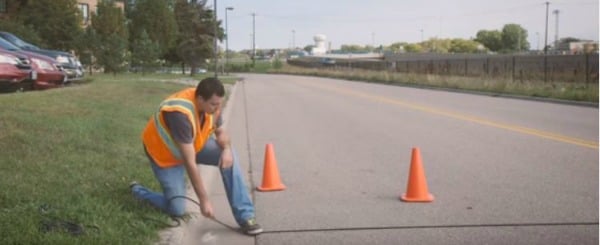
It’s counting season here at Traffic Data Inc. Every year just before school gets out we get a rush from different cities, counties and other engineering firms needing traffic data before patterns change for the summer.
Looking at our field work board as I write this, we are currently in the midst of nine different data collection projects. Keeping all of these projects straight and making sure everything is done correctly and on time is no simple task, but with that being the norm around here we have come to develop a routine around it. Here are some tips for staying organized with your traffic counting projects.
1. Easy-to-Use Tracking System. An easy-to-use tracking system doesn’t have to be high-tech, it just needs be simple enough so that your entire team will use it or it won’t be effective. We have tried apps, and project management programs, but what has been the most effective for our team, are tried and true spreadsheets and dry erase boards.
The spreadsheet lists every project we have with some key information such as the client name and contact, the project number, the project amount, when it was authorized, the due date and the date we completed it. This allows us to easily keep track of what we have going on at any given time. It also gives us some useful information such as the total value of all of our current projects we have as well allowing us to make sure everything is getting sent to the clients on time.
Our dry erase board is prominently displayed in our office and shows the dates we need field work done for each project. This allows anyone to be able to see what the field work load is going to be for a certain day or week and greatly helps in the scheduling for a lot of folks in the office.
2. Know Your Deadlines. Successful field work is dependent upon many factors including weather, holidays, and equipment, to name a few. Be sure to negotiate deadlines with your clients that are realistic and prioritize field work accordingly. This may seem oblivious, but it’s easy to take on multiple projects and create timelines assuming all elements of the project will run exactly as planned. But, a successful field work plan including contingency time to account for the unexpected.
3. Inventory and Clearly Mark All Equipment. This may seem like an obvious step, but it’s easy to overlook, especially on busy days in the field or under tight deadlines. Before heading into the field make sure to run through this check list.
- Number and label your equipment. You will want to be able to reference these number when you setup equipment in the field in Step 4 and it will make it easier to know whether or not all equipment was retrieved when you are finished with your project
- Charge any equipment that requires a battery and carry extra power supplies if needed.
- Check tubes that they are in good working order and have extras on hand for unexpected needs.
- Pack extra accessories (road tape, cameras, tubes, etc.) so you don’t need to go back to the office for items that may fail in the field.
4. Take Detailed Field Notes. Once you have a handle on all of the projects you are doing, make sure to take detailed notes when you are in the field. We have found the best way to do this is through some simple paperwork.
Citing a recent example, let’s say we have a project where we need to collect 13 hour turning movement counts at 13 intersections and 48 hour directional tube counts at seven locations. If we send someone out with 13 COUNTcams video records, and seven tube counters to collect all of the data, we clearly mark how each camera and tube counter is used in the field. Otherwise when the equipment is picked up at the end of the week, we’ll have a heck of a time figuring out what is what.
For example, for each camera and tube setup we do, we complete either a Video Recording Sheet or a Tube Counting Sheet. These sheets include basic info such as the site code, location, recording period and an aerial image. In the field, the technician will write down information on the equipment used, such as the serial number and SD card number, as well as the time the equipment was set up. Technicians also indicate on the aerial image how the equipment was physically located in the space. If they are setting up a camera, they will draw a circle and an arrow to indicate where the camera is and what direction it is pointing. If they are setting up tubes, the technicians will sketch the tube layout noting the A tube and B tube. These sketches ensure there is no ambiguity when the data is downloaded.
5. Pay Attention. With a lot of small factors making up a large data collection project, successful data collection takes close attention. It takes thoughtful planning, and documenting and tracking details in the field. Paying careful attention doesn’t have to be complicated. It’s just a commitment to the processes faithfully.

